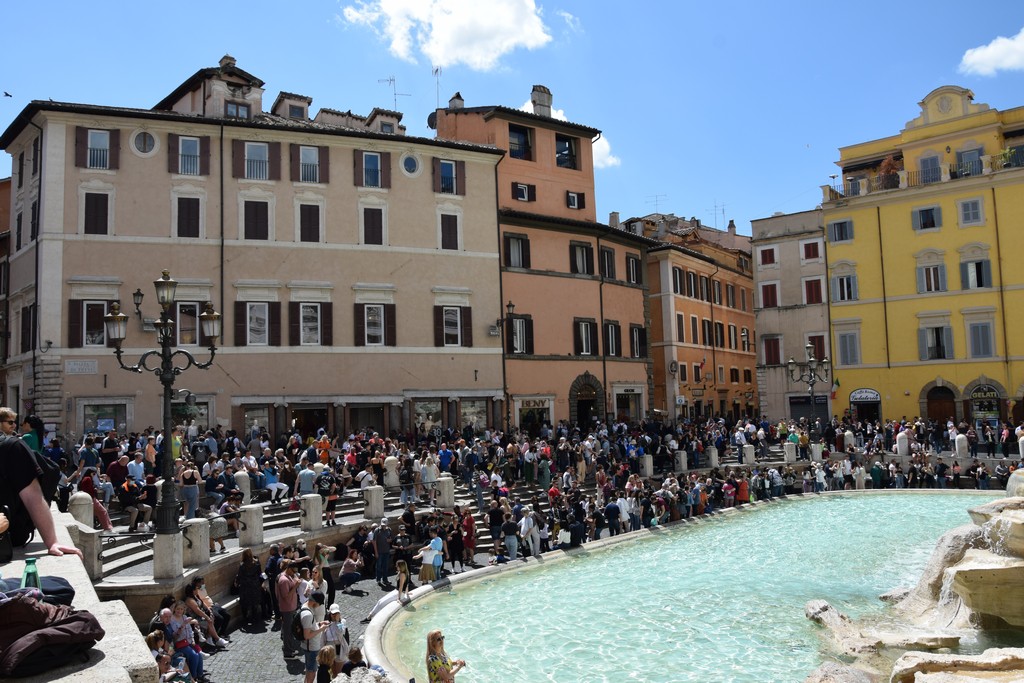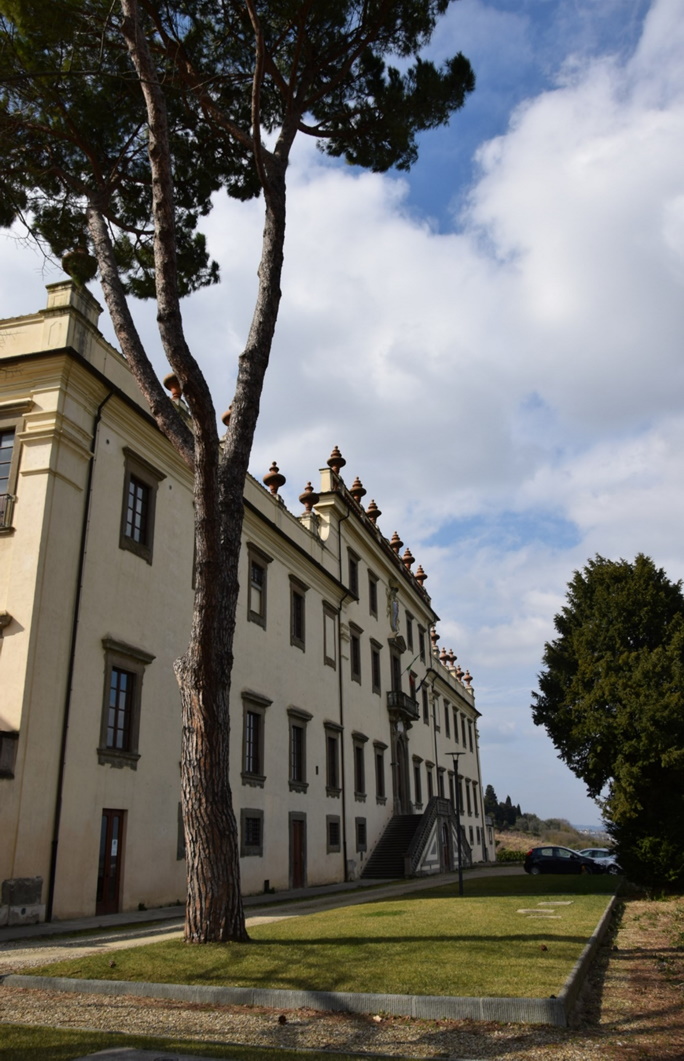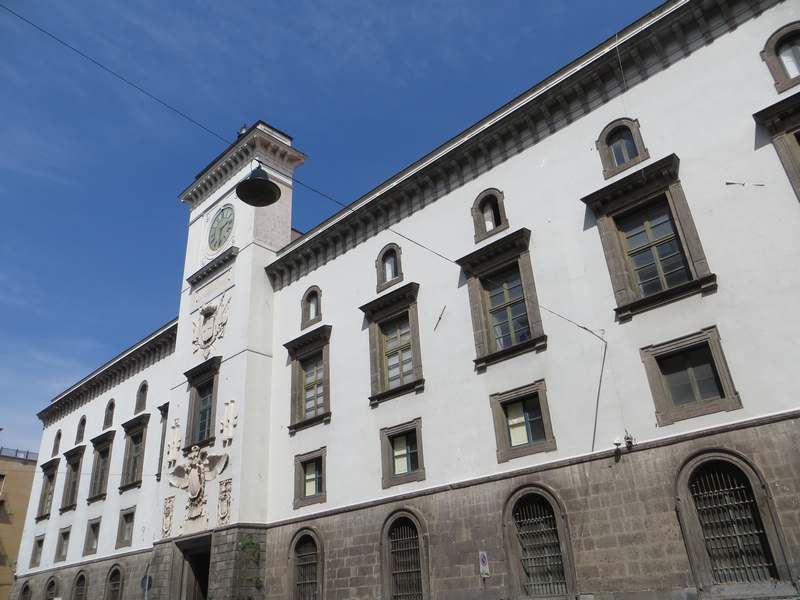The School can have up to a maximum of three locations, identified by decree of the Minister of Justice, in agreement with the Minister of Economy and Finance (Ministerial Decree 6 June 2022).
Currently there are premises in Rome, Scandicci, in the district of Florence, and Naples Castel Capuano.
Rome office – Trevi Fountain
The legal and administrative premise of the School was inaugurated in May 2022 at the presence of the President of the Republic.
Located on the corner between via di S. Vincenzo and piazza Fontana di Trevi, the seat was assigned to the School by the National Agency for the administration and destination of seized and confiscated assets and was titled to Mario Amato, deputy public prosecutor in Rome killed for the investigations he was conducting into the links between subversive organizations and Roman crime.
From this perspective, the assignment constituted a tangible recognition of the institutions’ commitment to the fight against organized crime.
Furthermore, in the project presented by the School for the judiciary it was underlined that the history of the asset and its final destination could also have been a testimony of the successes that the judiciary manages to obtain in the fight against organized crime, especially in the international sector on the occasion of the numerous visits of foreign delegations both from countries belonging to the European judicial training network and of countries with which the School has concluded collaboration agreements.

Finally, the assignment was able to constitute a concrete example of the virtuous process of finalizing the confiscated assets, so as to enhance, more generally, the system of combating crime from an economic-patrimonial point of view, representing a precious opportunity to highlight the effectiveness , in terms of the attack on assets of criminal origin, of the legislation on the prevention procedure, proper to the Italian legal system.
The offices of the President and the Secretary General are located in this premise where the Board of the School usually meets.
The venue has also a seminar room that can accommodate up to 30 participants.
Other administrative offices are located in the premise in via Tronto, 2, in a state-owned building assigned to the Ministry of Justice and also resulting from a confiscation order against a criminal organization.
Scandicci office (Florence) – Villa Castel Pulci

Castel Pulci, whose original nucleus dates back to the 13th century, dominates, with its imposing appearance, the entire Arno valley between Scandicci and Lastra a Signa: it has always been a point of reference for all those who went to Florence, together with the millenary Abbey of Badia a Settimo, not far away.
Leonardo da Vinci also indicated Castel Pulci in the Madrid Codex and Giorgio Vasari the Younger depicted the plan of the Soderini villa, built in the 500s next to the ancient Pulci castle.
Built as a fortified nucleus in the Middle Ages and expanded over the centuries, today the complex includes the bodies of the eighteenth-century villa and the Oratory of Sant´Jacopo with the precious frescoes by Grifo di Tancredi depicting the Stories of Santa Caterina d´Alessandria (end of the XIII century).
The transition from ´palatium´ to ´villa´ took place in the first half of the 16th century under the bishop of Volterra, Cardinal Francesco Soderini. However, it was only after the transfer of ownership to the Riccardi family (1590) that the villa acquired its current appearance and dimensions, with the entrance on the northern front and the connection to Via Pisana.
The construction of the scenic avenue of cypresses, called the “Viottolone”, from which the town takes its name, by the architect Giuliano Ciaccheri, and the construction of the current large Baroque villa based on a project by the engineer Joachim Fortini date back to that period.
Naples office – Castel Capuano
Adjacent to the central Piazza Garibaldi which hosts the central station of Naples, Castel Capuano, after Castel dell’Ovo, is the oldest castle in Naples and owes its name to the fact that it is located close to Porta Capuana, which opens onto the road leading to ancient Capua.
With Norman origin (1140 AD), built on Greek and Roman remains, still visible in various points of the castle, the building, located at the mouth of the current via dei Tribunali, is state property and is considered a site of considerable historical-artistic interest, bound by law n. 1089 of 1939.
The building, which occupies an area of about 16,000 square meters, has been the seat of all the Neapolitan judicial offices since 1540 (as the marble plaque at the entrance recalls), when Naples was a province of the Kingdom of Charles of Habsburg , until 2007, when all the judicial offices completed the transfer to the New Palace of Justice, located in the business district. Even now, as evidence of the indissoluble bond of the place with justice, the Presidency Offices of the Court of Appeal, of the General Prosecutor’s Office of the Court of Naples, as well as of the Council of the Order of Lawyers of Naples are still in the castle.

Among the most important rooms, also used for the training of magistrates, the great Salone della Corte d’Appello (or Salone dei Busti) and the Saloncino dei Busti stand out.
The ancient rooms owe their name to the collection of marble busts of the most famous lawyers of the Naples court (begun in 1882 and still in progress) and bear eighteenth-century frescoes depicting allegories of justice and the provinces of the kingdom of Naples (by Leonardo Olivieri from Martina Franca and Antonio Cacciapuoti).
The hall used for the solemn opening ceremony of the judicial year was the hearing room of the sixteenth-century Chamber of the summary, whose judges used to gather in prayer in the precious adjacent Chapel of the Sommaria, which bears sixteenth-century frescoes by Pedro de Rubiales.
Also worth mentioning is the room that was the seat of the Grand Council during the reign of the Angevins, which later became the hearing room of the Grand Criminal Court in the Bourbon period, which today hosts a library containing about 80,000 volumes, including very rare works from the 16th, 17 th and 18 th century, which together constitute the so-called Fondo Antico.
The area in which Castel Capuano is located is characterized by significant monumental presences, both publicly owned and mixed public-private, such as the Pio Monte della Misericordia, with Caravaggio’s masterpiece “The Seven Works of Mercy ”, the Banco di Napoli historical archive museum, the S. Maria della Pace hospital, the former military woolen mill, the church of S. Caterina in Formello, the complex of S. Giovanni in Carbonara, the Cathedral with the Diocesan Museum, the Donna Regina complex and the Madre Museum, which has now become a cultural reference point for contemporary art.
Following the D.M. 6 June 2022, published on 16 August 2022 in the Official Bulletin of the Ministry of Justice, Castel Capuano is one of the teaching premises of the School pursuant to art. 1 of Legislative Decree 30 January 2006, next to the Scandicci and Rome premises.
